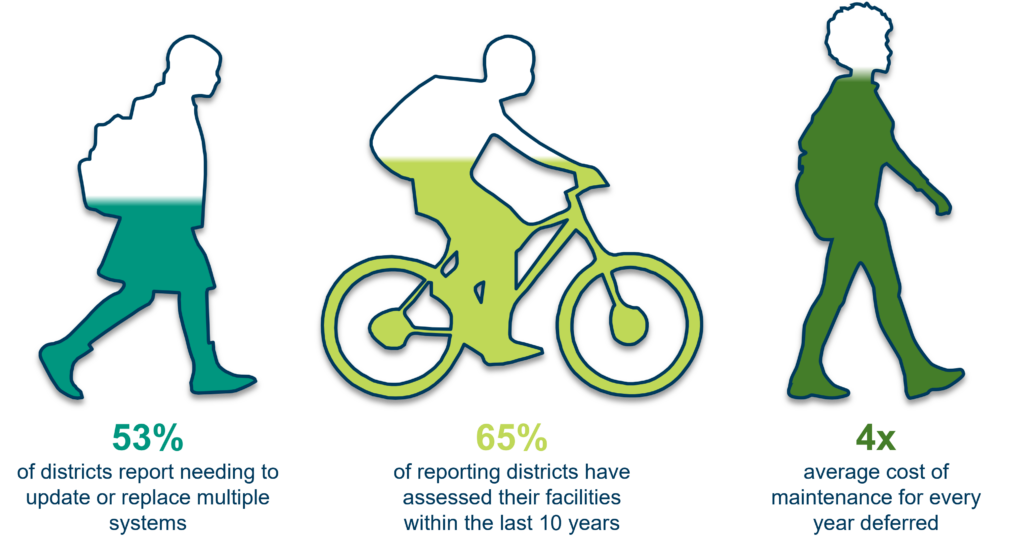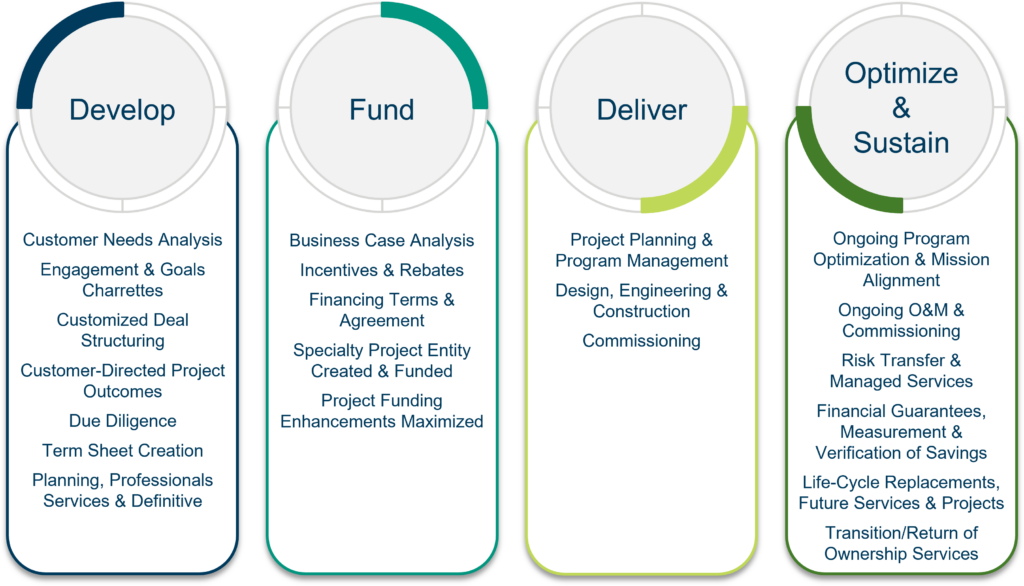- All Posts
- A Crisis in American K-12 Infrastructure
A Crisis in American K-12 Infrastructure
K-12 school buildings are suffering from an epidemic of performance issues that affect not just students and educators, but the communities our schools serve as well. For U.S. students, the physical school environment heavily impacts their long-term development and mental, emotional and physical growth.
The Nature of the Problem
From aging HVAC systems and deferred maintenance to questionable indoor air quality affecting occupant health, student education is impacted when facilities are not operating at their best. Unfortunately for the districts responsible for keeping facilities up to date, they are working at a deficit that only gets worse with each passing year.
- According to the U.S. Department of Education, the average school building in America is 42 years old.
- According to the U.S. Environmental Protection Agency, “after 40 years a school building begins to rapidly deteriorate, if not properly maintained.”
- In a 2020 U.S. General Accountability Office survey, 53% of public school districts reported the need to update and/or fully replace multiple building systems. Additionally, this same survey revealed that only 65% of reporting school districts had even assessed their facilities within the past 10 years.
Every $1 of maintenance deferred this year creates $4 of future deferred maintenance. The starting impact creates spiraling performance issues and deferred maintenance that can stifle student learning.

But what does this mean when students enter the building? Students are subject to the state of their schools every time they step through the doors.
- Improper ventilation and lack of fresh air may lead to fatigue and health issues that hamper effective learning.
- Failing air conditioning systems mean hot rooms, increasing heat-related health risks to students and statistically lower test scores.
- Poor or deficient lighting causes eye strain and off-balance circadian rhythms that impact test scores and student engagement in the classroom.
- Leaking roofs and windows, and drafty or cold classrooms result in sick days and distracting classrooms, setting students back, both academically and socially.
- Unreliable sports field lighting means canceled games and missed opportunities for gifted student-athletes.
For many schools, simply keeping facilities “up to date” means annual capital and operational spending designed to meet the essential needs of building operations. But what about those schools that want their learning and working environments to be “best-in-class”? What about those schools that want to provide more than “the essential” for their students and communities?
In both financial and operational partnerships with our K-12 clients, Viridis Initiative helps deliver schools that focus and invest in their core educational mission, expanding from “the essential” to becoming leaders in technologies, amenities, student health and engagement.
The Funding Factor
When reviewing the American Society of Civil Engineers 2021 Infrastructure Report Card and their funding breakdowns, 55% of school districts reported their funding coming from local revenues, and another 36% relied on state funds. Why is this important? 91% of our schools are competing for a small portion of available funds every year and suffer when they are not considered the highest priority.
According to the National Council on School Facilities, the national estimated average budget needed for school infrastructure was reported at $87 billion.
While many people have come to accept these situations and their results as inevitable, we at Viridis believe differently. We take seriously the call to action to create flexible and innovative ways for school districts to fund and operate their infrastructure.
Viridis deploys our “Mission-Driven” capital, combined with our industry-leading service and campus operations offerings, to deliver “best-in-class” learning environments through our energy and infrastructure relationships.
The Viridis Development Process
Viridis has created a development process that allows us to work with our clients to provide innovative solutions to their most pressing problems. Our four-step process includes a highly flexible, “customer-driven” process that emphasizes optionality and total outcomes, not the typical hyperfocus on a “transaction.”
The Viridis Initiative process involves gaining a comprehensive understanding of the existing conditions of our client’s facilities and a detailed ideated customer needs analysis, culminating in a short-term and long-term roadmap to achieving our client’s goals. We provide both the expertise and capital required to deliver your vision. Viridis manages the entire design, construction, and ongoing maintenance of your complex facilities, guaranteeing their operation and providing an immediate step forward in capital improvement and carbon reduction.

We are passionate about helping our clients think about infrastructure differently. Let us show you how to make your infrastructure work for you while also creating “best-in-class” learning environments.
What would you do in your schools if operating buildings wasn’t a concern and money was no object when it comes to funding your infrastructure vision?